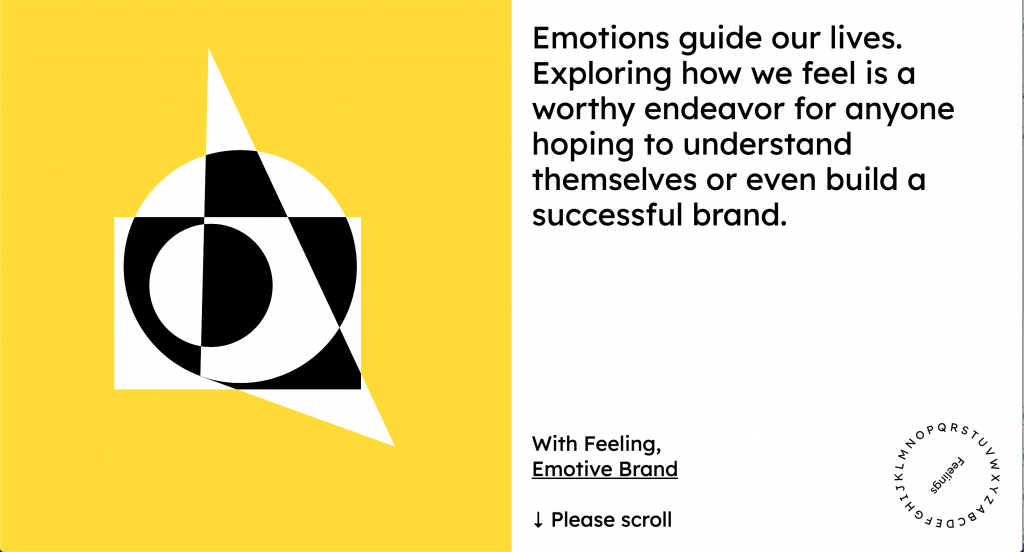A little over a year ago I went to Paris with my mom and we visited the Musée du Quai Branly – Jacques Chirac. There was this installation there called “The River” that generated in real time the names of all the people, cultural groups, and locations, that are named/appear in the museum into a river that flowed down this winding ramp. All of the words would randomly generate at the beginning of the stream and flow as if pulled by gravity to the end bumping into each other and clumping together along the way. The forward for the piece says that it was made by Charles Sandison the programs used to make the projected river were made in C++ language. I would say that the piece contributes to the possibility of more generative art within museums in the future so that more life/movement can be brought to still artifacts and words which make up history museums. I can’t say who might’ve inspired the artist because I’m not very familiar with generative art/artists. This piece caught my attention because it was very mysterious. You had to follow the river and look closely at all the words, which were difficult to see, to understand what they meant. It was very different from everything else in the museum, but at the same time tied everything together by documenting all of its contents in this unique way.
https://www.youtube.com/watch?v=u_LAOv4ZqSQhttps://www.youtube.com/watch?v=H1dOk2nKSJI
]]>“This Person Does Not Exist” is a computational project that was created by Phillip Wang using StyleGAN, a machine learning framework made available by the technology company Nvidia. Phillip is a former Uber software engineer who created the program to show the impressive capabilities of GANs (generative adversarial networks.) It was originally shared to a small Facebook group but went on to get over 4 million hits. His inspiration for the project likely came from the rise of intelligent video manipulation and “deepfakes” on the internet.
Upon loading the webpage, the screen is filled with a high definition headshot of a random person. Reloading the page brings up another person, and so on. While the images look believable, they are all completely fabricated by an artificial intelligence; thus the title “This Person Does not Exist.”
What makes this project so interesting to me is the questions it brings up. If a computer program can so easily trick us into thinking a face is real, what else could we be made to believe? In a world where we already question almost every piece of information fed to us from entertainment media and the news, it seems as though tools for digital deception are only becoming more advanced. By highlighting the exponentially expanding capabilities of artificial intelligence, this work leaves the user feeling both deep discomfort and utter awe.

Emotive Brand is a San Fransisco based B2B brand strategy firm. I am not entirely sure how many people were involved, but according to my research, it seems like Emotive Brand’s lead designer Beth, senior designer Jonathan Haggard, designer Keyoni Scott, and creative director Thomas Hutchings have worked on it. They designed it in illustrator, animated it in After Effects, and transferred those animation to the web using Lottie.js. I think the creators have been inspired by their own previous works and their own brand identity, of handling emotions with design and interactive methods. This project introduced me to the Lottie.js. I used Lottie.js for my interactive project for the design class I took last semester. I think this project is a good inspiration for user interaction and experience.

The interactive fashion couture work by Iris Van Herpen is one of the most eye opening project for me among the field of technological art. Employing smart textiles, garments are able to move with the movement of the model and the movement of the environment. For the one of the runway show “Hypnosis”, it is realized by a team of collaborating artists to achieve the final production who are active in the technological art field, such as the multi-disciplinary architect Philip Beesley. A total of 20 looks took six months for the concepts to turn into physical work. The development of the work are made by both custom software and commercial software. For example, the 3d twisted vortex structure are constructed in Rhino and Grasshopper while the e-textile from certain pieces are build with custom scripts.
Iris Van Herpen writes in her show notes that the first thread of inspiration comes from the Spanish neuroanatomist Ramón y Cajal, who translated the symptoms captured from the neural systems to sophisticated graphics. The projected guide to the forthcoming explorations on how human senses are able to influence the functions of wearable textiles.